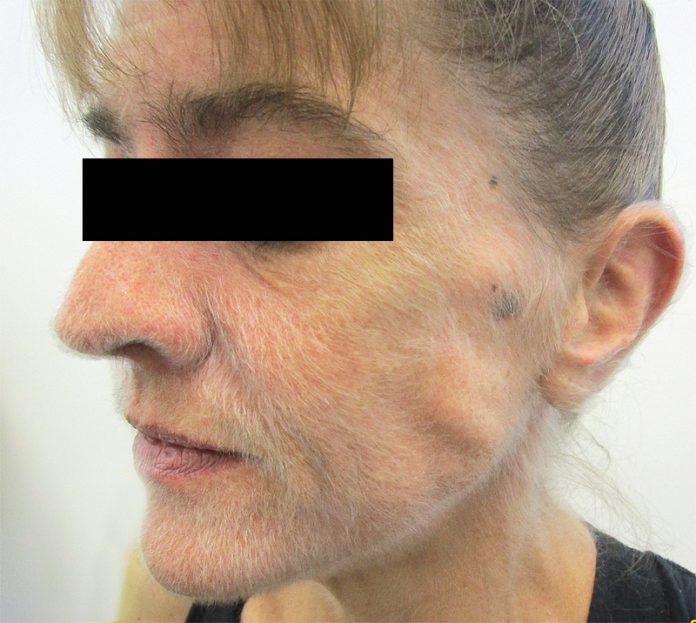An adult woman presents with excessive lanugo-type hair growth-the type of hair seen in some neonates. Investigations identify an underlying malignancy!
A 51-year-old woman presented to the outpatient department of dermatology with complaints of rapidly progressive growth of hair on her face, neck, and upper body for the past 2 months. The patient also complained of fatigue, weight loss, and cough.
Past medical history did not reveal any relevant or remarkable findings. However, she had a 37-pack-year smoking history. She had no chronic illnesses nor was taking any medications.
On examination, lanugo-type hair (fine hair with little or no pigment) covered her face, ears, neck, and upper trunk. Therefore, the doctor diagnosed the patient with acquired hypertrichosis lanuginose.
Acquired hypertrichosis lanuginose:
Acquired hypertrichosis lanuginose is a very rare condition characterised by excessive growth of lanugo hair. This hair-type is similar to what can be seen in some neonates, i.e., thin, fine, and unpigmented hair. It most commonly involves the face, but may also involve trunk, axillae, and extremities. It spares palms, soles, scalp, and pubic regions.
Additionally, an underlying condition is usually associated with it. Most commonly it is associated with malignancy. The most commonly associated malignancies include lung, breast, uterine, colorectal, and bladder cancers and lymphoma. Hypertrichosis may be the only presenting sign of malignancy and may present as early as 2 years prior to diagnosis. Besides cancer, other non-malignant associations include endocrine disorders, nutritional disorders like anorexia nervosa, hyperthyroidism, medications, etc.
Therefore, it is important to take a thorough history, perform detailed physical examination, and evaluate further to rule out any underlying condition.
Management:
This patient underwent positron-emission tomography–computed tomography which identified avid nodal disease in the right supraclavicular fossa. It also revealed an opacity in the right lung’s lower lobe. The opacity measured 12-mm in size.
The doctors performed a biopsy of the right supraclavicular lymph node. The histopathological evaluation confirmed the diagnosis of primary lung adenocarcinoma.
The patient received treatment with chemotherapy and radiation followed by durvalumab.
Approximately 2 months after the initiation of treatment, the patient reported substantial reduction in the hair growth. Moreover, her other symptoms, i.e., cough and weight loss, had also completely resolved.
References
Tom Kovitwanichkanont, M. B. (2020, December 31). Acquired Hypertrichosis Lanuginosa. Retrieved from The New England Journal of Medicine: https://www.nejm.org/doi/full/10.1056/NEJMicm2018796




